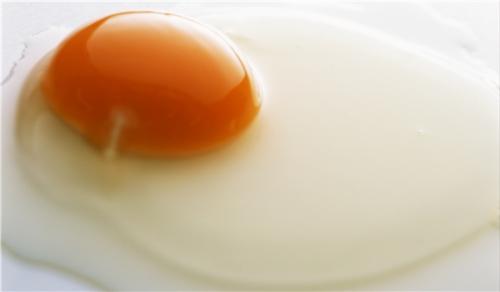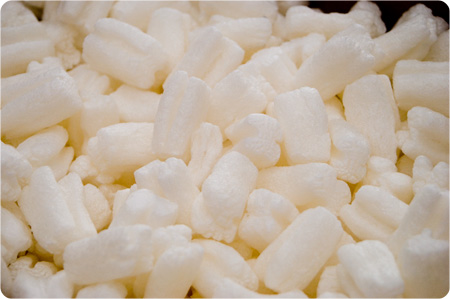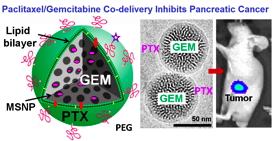-
Posts
12 -
Joined
-
Last visited
Profile Information
-
Favorite Area of Science
nanotechnology
cool's Achievements

Quark (2/13)
0
Reputation
-
Sorry Moderator..It is not an advertising link.I just give original source to help others if they need more details about the topic.
-
Spending time with loved ones or things we get positive feelings and in during exams or bad things we get fearful or negative response. This is all due to almond shaped structure in brain called amygdala. This was found out by MIT researchers. Two populations neurons in the brain responsible for the good and bad feeling to us according to the researchers. These neurons pass the information to other regions in brain that create feelings to us. This is very helpful to cure the people who have mental illness. Advertising link removed by Moderator
-
All of us have many dreams every night.Why do we only remember some of them? And what determines which ones we remember?
-
A team of researchers from the University of Cambridge have unravelled one of the mysteries of electromagnetism, which could enable the design of antennas small enough to be integrated into an electronic chip. These ultra-small antennas – the so-called ‘last frontier’ of semiconductor design – would be a massive leap forward for wireless communications. The researchers have proposed that electromagnetic waves are generated not only from the acceleration of electrons, but also from a phenomenon known as symmetry breaking. These new observations of radiation resulting from broken symmetry of the electric field may provide some link between the two fields. Team used thin films of piezoelectric materials, a type of insulator which is deformed or vibrated when voltage is applied. They found that at a certain frequency, these materials become not only efficient resonators, but efficient radiators as well, meaning that they can be used as aerials.The researchers determined that the reason for this phenomenon is due to symmetry breaking of the electric field associated with the electron acceleration. The researchers found that by subjecting the piezoelectric thin films to an asymmetric excitation, the symmetry of the system is similarly broken, resulting in a corresponding symmetry breaking of the electric field, and the generation of electromagnetic radiation.Piezoelectric materials can be made in thin film forms using materials such as lithium niobate, gallium nitride and gallium *. Gallium *-based amplifiers and filters are already available on the market and this new discovery opens up new ways of integrating antennas on a chip along with other components. See more.
-
Researchers proposed the application of egg white as the size-controlling agent in the production of oxide nanoparticles. Egg white is a natural biomaterial that contains high amount of amino acids and various proteins such as albumin and lysosome. Amino acids have a structure that can play the role of stabilizer and size-controller in the synthesis of nanoparticles.The aim of the group was to synthesize and evaluate the toxicity of cerium oxide (CeO2) nanoparticles through green chemistry method as a safe and novel approach. Non-toxic cerium oxide nanoparticles have been produced through this method with average particle size of about 24 nm. Egg white has been used directly in this research due to its availability and reasonable price.In this method lack of the use of hazardous materials and chemicals.
-
A spice commonly used in curry could help erase bad memories, according to a study.Curcumin, a bright-yellow compound found in the root of the Indian spice turmeric, prevented new fear memories being stored in the brain, and also removed pre-existing fear memories, researchers found.It is hoped that the findings will help develop treatments for people suffering with psychological disorders. Psychologists from The City University of New York trained rats to become scared when they heard a particular sound. Scientists assumed the creatures were frightened when they froze.Hours later, when the same sound was played to the rats, those who had been given ordinary food froze.Yet the rats fed the curcumin-rich diet didn’t freeze, suggesting their fearful memories had been erased. Professor Glenn Schafe, who led the study, said: ‘This suggests that people suffering from post-traumatic stress disorder and other psychological disorders that are characterised by fearful memories may benefit substantially from a curcumin-enriched diet.’Memories are formed in the brain as new connections between neurons.They are initially fragile, but gradually stabilise in the brain as they are put into long-term storage - a process known as consolidation.
-
Scientists have developed tiny nanoneedles that have successfully prompted parts of the body to generate new blood vessels, in a trial in mice.Their nanoneedle technique could ultimately help damaged organs and nerves to repair themselves and help transplanted organs to thrive. The nanoneedles work by delivering nucleic acids to a specific area. Nucleic acids are the building blocks of all living organisms and they encode, transmit and express genetic information.The nanoneedles are tiny porous structures that act as a sponge to load significantly more nucleic acids than solid structures. This makes them more effective at delivering their payload. They can penetrate the cell, bypassing its outer membrane, to deliver nucleic acids without harming or killing the cell. The nanoneedles are made from biodegradable silicon, meaning that they can be left in the body without leaving a toxic residue behind. The silicon degrades in about two days, leaving behind only a negligible amount of a harmless substance called orthosilicic acid. The hope is that one day scientists will be able to help promote the generation of new blood vessels in people, using nanoneedles, to provide transplanted organs or future artificial organ implants with the necessary connections to the rest of the body, so that they can function properly with a minimal chance of being rejected. Source.
-
A new research was carried out on chocolate. Researchers have found a way to make chocolate more healthier and tastier with greater levels of anti-oxidants.They said that a pod-storage step before the beans were even fermented to see whether that would have an effect on the polyphenol content.Researchers 300 pods into four groups that were either not stored at all or stored for three, seven or 10 days before processing.This technique is called ‘pulp preconditioning’. After each storage period passed, fermentation and drying were done as usual. The seven-day storage resulted in the highest antioxidant activity after roasting. To assess the effects of roasting, the researchers took samples from each of the storage groups and roasted them at the same temperature for different times. The current process is to roast the beans for 10-20 minutes at 120-130 degrees Celsius.Researcher’s team adjusted this to 45 minutes at 116 degrees Celsius and discovered this slower roasting at a lower temperature increased the antioxidant activity compared to beans roasted with conventional method. See more.
-
Two senior engineering majors Seth Robertson (23) and Viet Tran (28) from George Mason University appear to have invented and built a way to use sound waves to put out fires in seconds . It looks to be successful in beginning testing.This extinguisher emits low-frequency sounds in the direction of the fire.This new design of extinguisher simply emits low-frequency sounds in the direction of the fire.They have constructed it using a power source, amplifier, sound generator, and focusing tube.It has currently cost around $600. See more.
-

Scientist convert packing peanuts into useful battery parts
cool replied to cool's topic in Science News
Above technologu they heated it. -
Packing peanuts are used worldwide as a perfect solution for shipping, they are notoriously difficult to break down, and only about 10 percent are recycled. Due to their low density, huge containers are required for transportation and shipment to a recycler, which is expensive and does not provide much profit on investment.A team of chemical engineers at Purdue University have shown now how to convert waste packing peanuts into high-performance carbon electrodes for rechargeable lithium-ion batteries that outperform conventional graphite electrodes, representing an environmentally friendly approach to reuse the waste. New approach: The new method is a very simple. The peanuts are heated between 500 and 900 degrees Celsius in a furnace under inert atmosphere in the presence or absence of a transition metal salt catalyst.The resulting material is then processed into the anodes.The process is inexpensive. Commercial anode particles are about 10 times thicker than the new anodes and have higher electrical resistance, which increase charging time. Detailed information.
-
UCLA researchers create new method that targets tumors with the same effectiveness but a significant reduction in both side effects and cost. Pancreatic cancer: Pancreatic cancer, a devastating disease with a five-year survival rate of 5 percent, is difficult to detect early and symptoms do not usually appear until the disease is advanced. As a result, many people are not diagnosed until their tumors are beyond the effective limits of surgery, leaving chemotherapy as the only viable treatment option. The chemotherapy drug most often used for pancreas cancer is gemcitabine, but its impact is often limited. Research: Recent research has found that combining gemcitabine with another drug called paclitaxel can improve the overall treatment effect. In the current method, Abraxane — a nano complex containing paclitaxel — and gemcitabine are given separately, which works to a degree, but because the drugs may stay in the body for different lengths of time, the combined beneficial effect is not fully synchronized.Initially the treatment tested in mice.In the mice that received the drugs inside the nanoparticle, pancreas tumors shrank dramatically.And also tumor spread, to nearby organs was eradicated in these mice. For more information.




